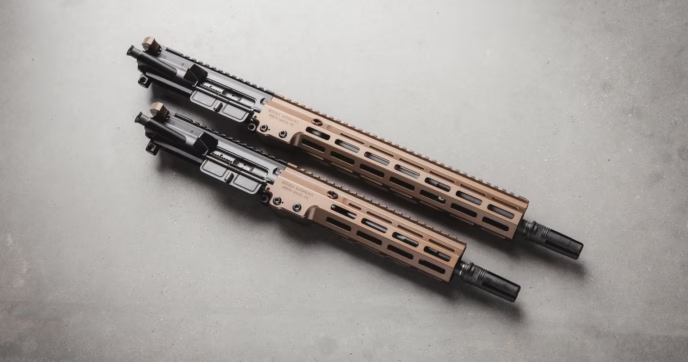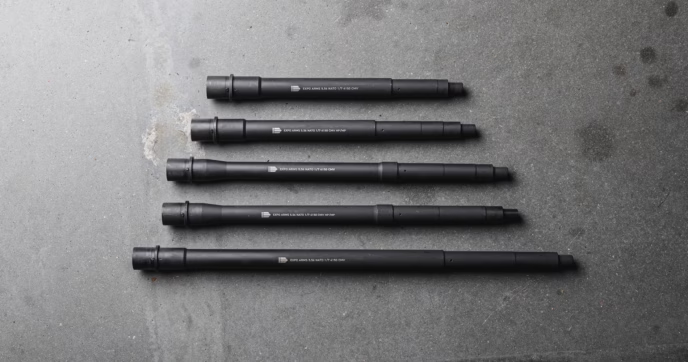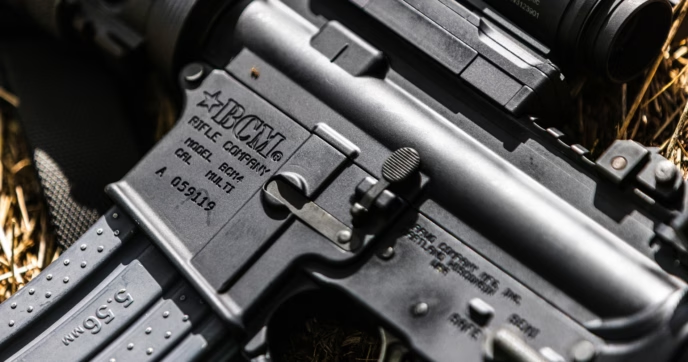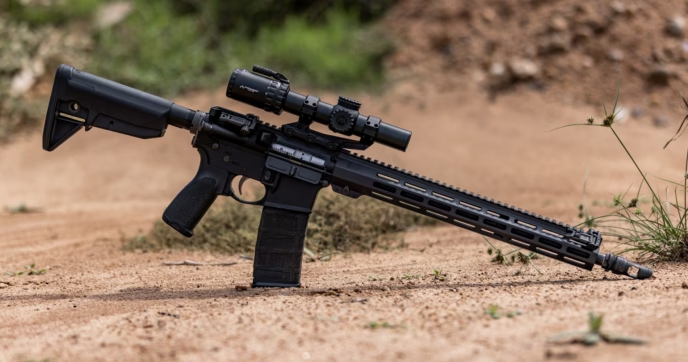GLOCK has been one of the most prominent names in the firearms industry for decades. Known for creating intuitive pistols that emphasize reliability and utility, they’ve garnered a sizeable reputation, established by both professionals and civilians alike.
Though most enthusiasts are well-aware of their modern offerings, the origins and history of their pistols often goes unnoticed. Since the early 1980s, GLOCK has continued to refine their handgun designs, with them having been in a near constant state of evolution since their introduction. Although elements of their earlier endeavors are still present on their modern designs, each update has improved their performance and overall usability.
Having been developing handguns for over 40 years, GLOCK handguns have come a long way from their initial introduction. And by looking at their history and the development of their various pistol models, it’s easy to see why they’re held in such high regard.
Understanding GLOCK Generations
Much like other handgun models, GLOCK handguns are categorized by their generation to denote which frame, slide, and parts they use. Currently, the only GLOCK generations still in production are the Gen 3, Gen 4, and Gen 5 designs, and each one has its own unique design elements that fit different preferences.
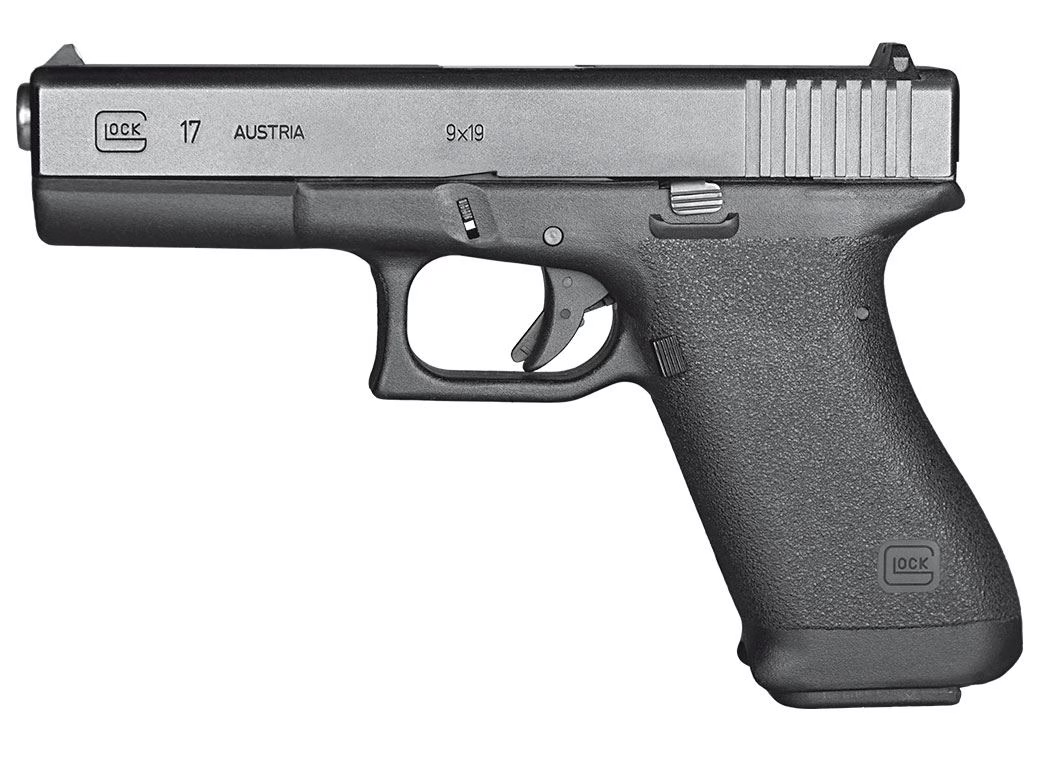
GLOCK Generation 1
The first GLOCK Gen 1 pistol ever put into production, the P80 (later known as the GLOCK 17), was introduced in 1982. During this time, polymer frame pistols weren’t all that common, and the ones that were available weren’t all that popular due to reliability issues. Although the P80 was made of polymer, it was extremely successful, becoming well-known for its reliability, and minimalistic design. Unlike other pistols of the time, the P80 was made up of only 33 parts—far fewer than other pistol models—giving it fewer potential points of failure.
Shortly after its release, it was adopted for use by the Austrian Military, causing the P80 to gain international attention. Eventually, they would see widespread use and adoption by Military and Law Enforcement groups in Europe, and even the United States by the Mid-1980s. During this time, the GLOCK P80 would be redesignated as the GLOCK 17, a pistol that would become one of the most popular handguns ever made, and one of the best GLOCK pistols for home-defense. In 1988, GLOCK would release a compact version of the G17 designed for better concealability known as the GLOCK 19, though it wouldn’t be mass produced until their Gen 2 line came out.
Features
The Gen 1 GLOCK 17 essentially set the stage for what was to come in later generations. Utilizing a 22-degree grip angle and a straight front wall design, they came with a pebble-stone grip texture and didn’t have any external safety lever. They instead used a specialized Safe Action® System which consisted of three separate passive safety mechanisms such as a trigger safety, firing pin safety, and a drop safety—all of which would carry over to later GLOCK generation designs as well.
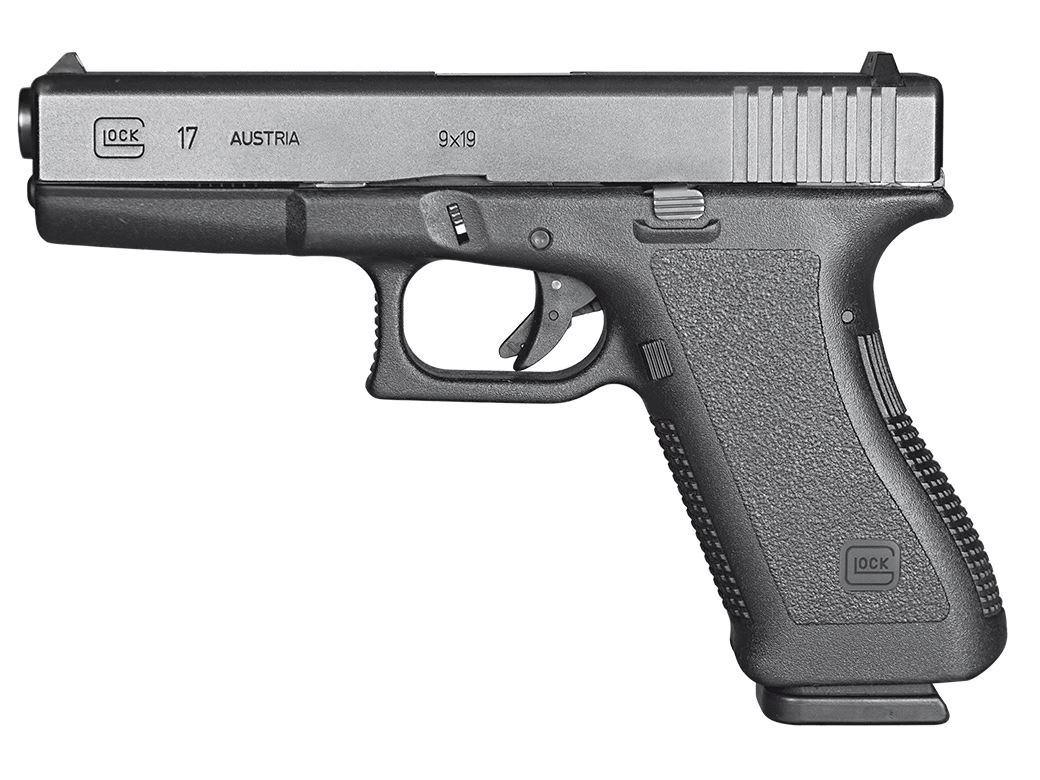
GLOCK Generation 2
Building on the foundation of their Gen 1 pistols, GLOCK introduced their Gen 2 pistol design to the market in 1988. This design was based on feedback received from users of the first gen G17, and as such, they came standard with a few noticeable upgrades. The frame design was altered slightly to have added texture on both front and backstraps of the grip, and on the front of the trigger guard for better indexing. Also, the recoil spring assembly was upgraded for better cyclic efficiency.
These improvements, while subtle, significantly enhanced the reliability and handling of their pistols. And as GLOCK’s popularity continued to skyrocket, they began producing more handgun models in addition to the G17.
Models
The G19 was one of the first new additions made alongside the G17. Despite being created when their Gen 1 design was still in production, they weren’t fully put into production until the GLOCK Gen 2 design was finalized. The G19 quickly became one of their most popular handgun models, with it being a popular EDC pistol when using the right concealed carry GLOCK 19 holster. Not long after its introduction, GLOCK began developing new pistol models that were specialized for different applications, and others chambered in different calibers.
Models like the G17L (long-slide) lengthened the slide and barrel of the G17, allowing it to be better suited for use in competitive shooting applications. The G26, another favored design, featured a new subcompact frame size and had a shorter slide and barrel for better concealability. They also created several new pistols chambered in different calibers with models such as the G20, G21, and G22 being chambered in 10mm, .45 ACP, and .40 S&W, respectively.
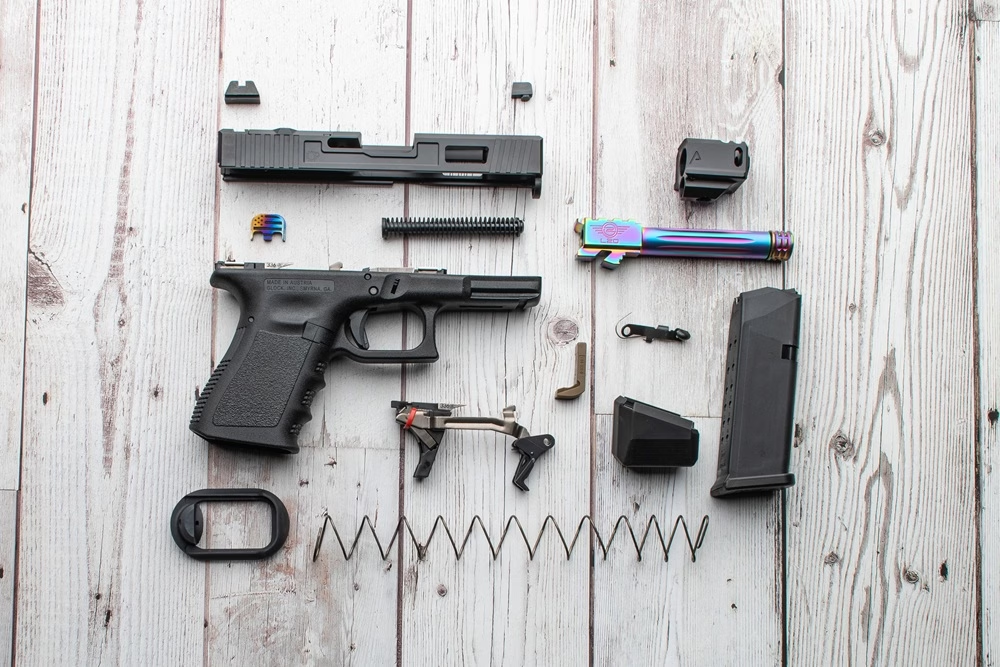
GLOCK Generation 3
Following the success of their Gen 2 pistols, GLOCK introduced their newer Gen 3 design in 1998, and it had many noticeable differences compared to the prior Gen 2 design. Arguably, the most notable changes were made to the frame. Gen 3 frames came with added reinforcement for better rigidity, and they came with finger grooves molded into the front strap to make getting a grip on the frame easier. The GLOCK Gen 3 frame design was also the first to include a dedicated accessory rail for weapon lights, and their slides were updated to feature a loaded chamber indicator.
GLOCK also introduced more color options for this generation too. Before, GLOCK pistols were exclusively made with a black finish, and after the Gen 3’s launch, they started making them in assorted colors like FDE, OD Green, and Gray. Nowadays, it’s common to find an assortment of multi-colored GLOCK pistols available, with options like the GLOCK 19 FDE variants being among the most popular. At the time of their release, however, this helped to boost their popularity on the civilian market.
In the same vein, the parts aftermarket for GLOCK pistols expanded rapidly following the Gen 3 design’s introduction. As such, Gen 3 pistols garnered a substantial following as they became easier to customize. Today, there are hundreds of custom parts and accessories like GLOCK 19-compatible optic ready upper options and trigger packages available for Gen 3 pistols.
Models
Each of the pistol models mentioned before were manufactured in a Gen 3 configuration, but GLOCK also introduced several new models as well. Their G31, G32, and G33 pistols used the .357 SIG cartridge and came with a full-size, compact, and sub-compact frame size, respectively. Similarly, they also introduced the G36, G37, G38, and the G39, which were each chambered in .45 GAP (GLOCK Automatic Pistol), a unique cartridge created by GLOCK in collaboration with Speer Ammunition designed to offer performance like .45 ACP while having a shorter cartridge length to make it viable for use in compact pistols.
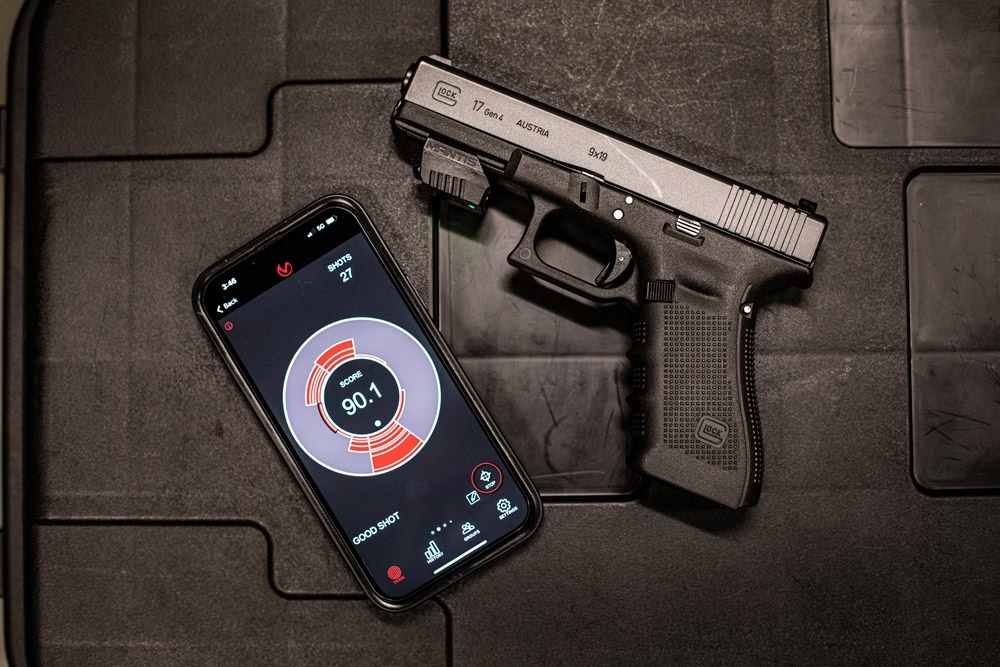
GLOCK Generation 4
Despite the success of the Gen 3 design, GLOCK refined their pistols even further, introducing the Gen 4 in 2009. Gen 4 frames were updated to be easily adapted based on individual preference—they came standard with interchangeable backstraps, allowing users to tailor the grip to fit their hand size, and they also had and updated grip texture
They also updated the magazine release design, making it reversible so that left-handed enthusiasts could make easier reloads. Aside from these changes, the slide was left relatively unaltered, although each GLOCK Gen 4 pistol came standard with their updated dual recoil spring to reduce muzzle flip and felt recoil while firing.
GLOCK MOS
One of the most significant changes implemented on select Gen 4 GLOCKs was their Modular Optic System (MOS). GLOCK MOS pistols come from the factory with an optic-ready slide. Unlike other pistol models that are most often cut to fit a specific optic mounting footprint, MOS cut slides are unique in that they’re designed to fit a multitude of adapters. This makes GLOCK MOS pistols compatible with nearly every mini-reflex and pistol red dot sight, so long as you use the right adapter plate.
Gen 4 Models
GLOCK introduced several new pistols after releasing their Gen 4 design. Among the most notable was the G41, a pistol chambered in .45 ACP, and like the G17L, it came standard with a long slide and was designed primarily for competitive shooting. Additionally, while not technically part of their Gen 4 lineup, GLOCK released a new Slimline pistol series during the Gen 4 design’s lifespan. More specifically, they produced the G42 and G43 pistols, which were chambered in .380 and 9mm, respectively, and designed mainly for concealed carry.

GLOCK Generation 5
GLOCK’s Gen 5 design was introduced in 2017 and has been the latest design update so far. Going back to their earlier Gen 1 and 2 designs, GLOCK Gen 5 pistols no longer have finger grooves, with them instead having a textured straight wall design. Adding to their adaptability, they come standard with an ambidextrous slide release, and they have a flared magwell too. For smoother holstering, the forward face of Gen 5 slides is beveled rather than flat, and for easier racking, select models can come with front serrations for better grip.
Gen 5 slides come are coated with GLOCK’s nDLC coating for better corrosion resistance, and lastly, each Gen 5 pistol comes with a GLOCK Marksman Barrel. By using enhanced polygonal rifling, the projectile has a much better gas seal when firing, increasing velocity, and providing better shot consistency. Plus, they’re engineered to have tighter fitting tolerances within the slide for better shot repeatability.
GLOCK also updated their magazines, so they now come with an enhanced orange follower and a larger floorplate for a better grip when pulling them out of a mag pouch, or out of the pistol when reloading. These magazines are still compatible with earlier generation pistols as well, so if you have a G19 for instance, all GLOCK 19 mags will be compatible with your pistol, regardless of its generation.
Models
Most of GLOCK’s popular handgun models, such as the G17, G19, and G26, are currently produced in a Gen 5 configurations, and like prior generations, they also developed new pistol models as well. They released their first ever crossover pistol known as the G19x/45—a pistol that blends the magazine capacity and grip size of the G17, with the slide and barrel length of the G19.
Similarly, they also released the G47, another crossover pistol designed to offer the same level of performance as the G17, while also being compatible with both G19 and G17 length upper assemblies. This gives you the opportunity to freely switch between slides, allowing you to change your pistol into something akin to either the G19x/45 or the G17 as you please.
Their Slimline series was expanded with the release of the G43x and G48 pistols. The G43x is essentially an updated version of the G43, coming with a taller frame that offers the same grip length as the G19, albeit with a thinner 1.1-inch width. The G48 uses the same frame but has a longer slide and barrel. Both have a standard magazine capacity of 10 rounds, but this can be extended to 15+ rounds by using specialized GLOCK-compatible magazines like those from Shield Arms, making them some of the most popular concealed carry handguns available. Plus, they’re available in an MOS configuration too.
Conclusion
GLOCK has had a significant impact on the firearms industry. Ever since the development of the P80 in 1982, they’ve revolutionized the industry by displaying all that’s possible with polymer-frame handguns. And over 40 years later, they’re still one of the industry’s leading handgun manufacturers.
Despite keeping a similar silhouette and profile, GLOCK pistols have undergone continuous design changes and refinements across multiple generations. Today, GLOCK continues to offer a vast assortment of pistols in their Gen 3, 4, and 5 configurations, in addition to their newer Crossover and Slimline series. Depending on your preference, you can easily find a GLOCK pistol model that fits your needs, regardless of whether you prefer the classic design of the Gen 3, the customizable ergonomics of the Gen 4, or the precision-focused and streamlined design of the Gen 5.
At the end of the day, no matter which one you opt for, it’s critical that you know how to disassemble it, whether it be for routine cleaning and maintenance or for when you’re upgrading it. Our guide, “How to Take Apart a GLOCK”, walks you through the disassembly process, step-by-step, and will get you up to speed on all you need to know about it.

